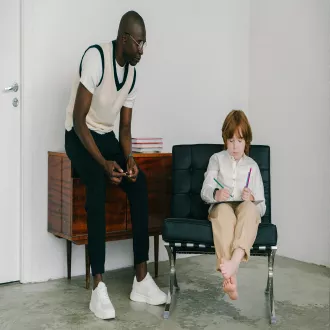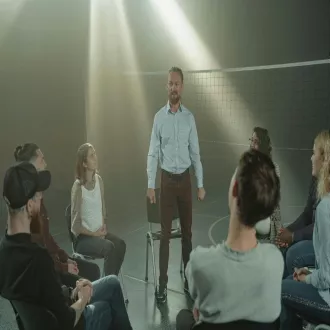Transcription Types of learning: classical, operant, and cognitive conditioning
Classical Conditioning: The Legacy of Ivan Pavlov
The Russian physiologist Ivan Pavlov was a pioneer in the study of classical conditioning, a type of learning in which we learn to associate two stimuli.
This process allows us to anticipate events that are meaningful to us, since our brain learns to link a signal with an event that will occur later.
Classical conditioning focuses on responses that are biological and natural, that is, on behaviors that the body performs completely automatically.
Pavlov's famous experiment with dogs demonstrated how a neutral stimulus, such as the sound of a bell, could provoke salivation.
This type of learning explains many of our emotional and physiological reactions, such as the fear we feel when seeing a needle after a bad experience.
Operant Conditioning: BF Skinner's Law of Effect
The psychologist BF Skinner was the main exponent of Operant conditioning, a type of learning in which we associate a voluntary response with its consequences.
In this type of conditioning, organisms learn to repeat actions that are followed by good outcomes and to avoid actions that produce bad outcomes.
Unlike classical conditioning, which is based on automatic responses, operant conditioning focuses on behaviors that we choose to perform voluntarily.
The fundamental principle is that actions that are followed by reinforcement, such as a reward, tend to increase, while those followed by punishment decrease.
This type of learning is fundamental to understanding how we acquire a wide range of skills and habits, from studying for a test to obeying rules.
Cognitive Learning: Beyond Observable Behavior
Cognitive learning is a type of learning that occurs through the acquisition of mental information, either through observation or language.
This perspective recognizes that not all learning is can be explained solely through the association of stimuli or the consequences of observable behavior.
We also learn by observing other people, imitating their actions and learning from their successes and failures, a process known as observational learning.
Furthermore, through language, we are able to learn about things we have never directly experienced, such as historical events or scientific concepts that are abstract.
The Integration of Different Types of Learning
It is very important to understand that these three types of learning are not mutually exclusive, but often interact and complement each other.
Our ability to learn is the result of a complex interaction between automatic responses, voluntary behaviors, and our cognitive thinking processes.
For example, we can learn to fear dogs (classical conditioning), but we can also learn to avoid dogs (operant conditioning) by observing others.
At the same time, our thinking (cognitive learning) can influence how we interpret both stimuli as the consequences of our own actions.
Understanding these different types of learning gives us a much more complete view of how we acquire the knowledge and skills that define us.
types of learning classical operant and cognitive conditioning




